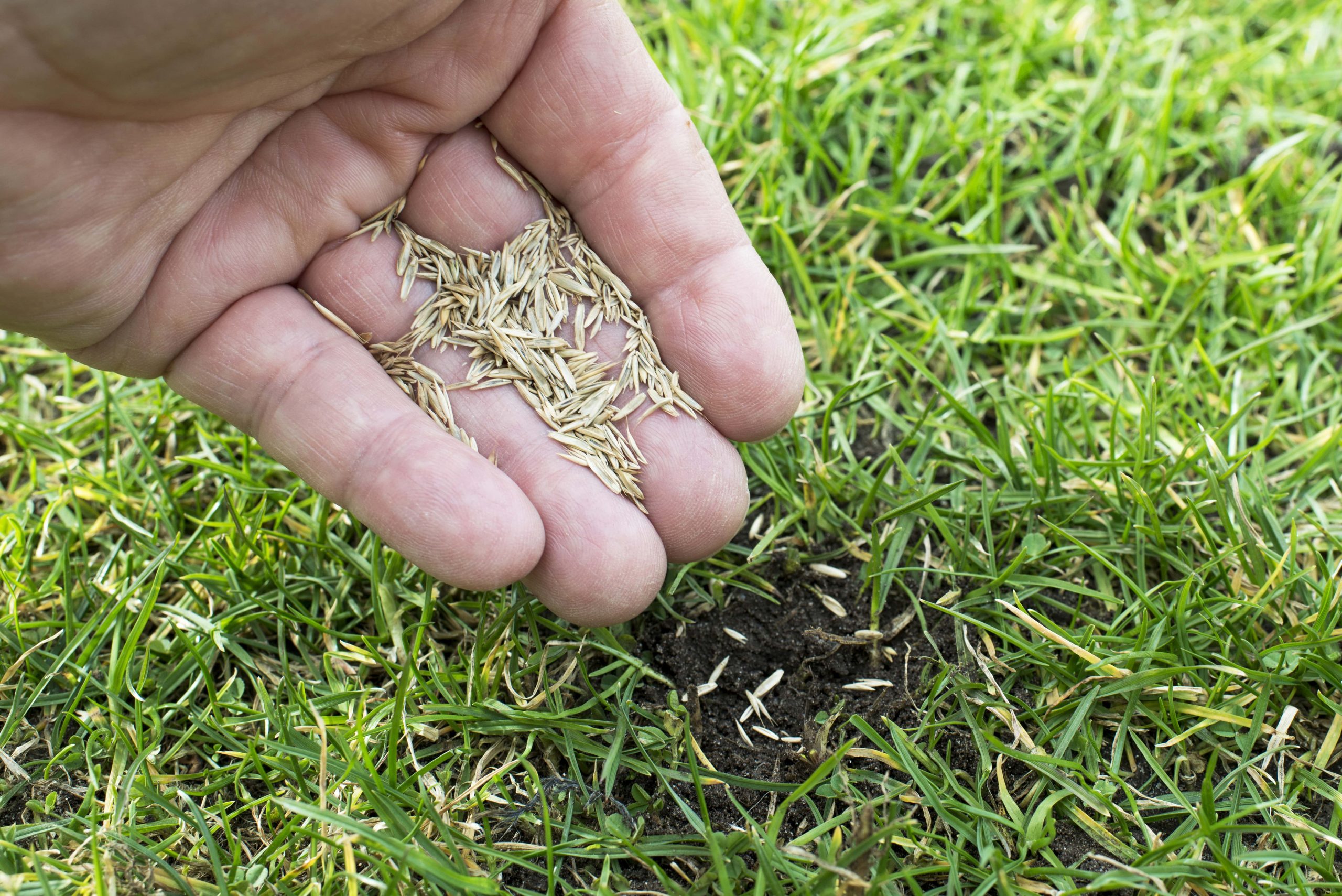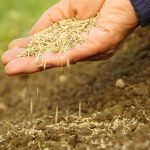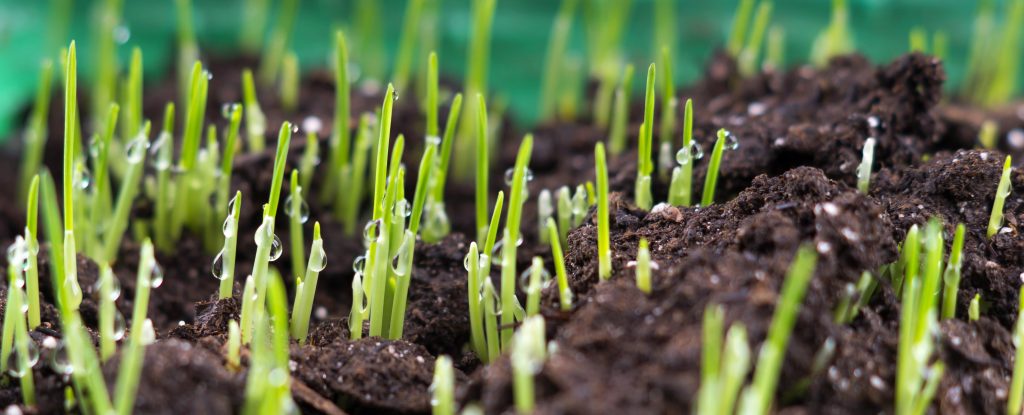Looking to grow a new lawn, or fix patchy grass?
In this guide, we’ll explain everything you ever wanted to know about how to sow grass seed, including how to find the right type of grass seeds, preparing the soil, when to plant the seeds, and how to ensure they grow properly.
We’ll look at how to sow grass seed when overseeding, as well as when planting a new lawn.
How to choose the right grass seed

In the UK, there are a huge number of different grass seed varieties you could consider planting.
For example, there are seeds that will produce an ornamental lawn, and there are seeds that grow into much more hard-wearing grass.
There are also different types of grasses that perform differently in different climates.
When choosing a grass seed mixture to buy, consider:
- Do you want a tough lawn that can withstand foot traffic, or a lawn with a more ornamental look? Each bag of seed mix will give some indication of how hardy or otherwise the grasses will be.
- How quickly do you need the lawn to grow? Some grass seed varieties grow more quickly than others. Perennial ryegrass is typically the fastest growing type of lawn seed.
- How much sun will the lawn get? Some types of grass seed, such as bermudagrass, perform best when they get a lot of direct sunlight.
- What type of soil do you have? If your sandy soil, it’s best to plant hardy seeds, such as Sheep Fescue. On the other hand, Tall Fescue performs better in clay soils, as it can withstand dry conditions in the summer.
- Are you creating a new lawn on bare soil, or overseeding an existing lawn? There are different varieties of seed mixtures created for each purpose. For existing lawns, you will want to get a similar species of grass to ensure a consistent look.
How to test grass seeds prior to sowing
If you have an old bag of grass seed mix, you might be wondering whether or not it will still grow.
Ideally, you should use your grass seed within six months of purchase, but it can last up to five years in a sealed bag.
Most seed mix bags will have an expiry date, but if you’re not sure, you can do a test on a small patch of grass. You can also place the seeds on a piece of damp kitchen roll on a plate, cover the plate in cling wrap, and place it in a warm indoor location. Then check for germination after two weeks, and note the proportion of seeds that germinate.
If you do a test and notice that 30% of the seeds germinate, you can still use them, but you will want to spread them at more than double the rate suggested by the manufacturer.
How to prepare the soil for grass seed

Before spreading the grass seed over your soil, you need to prepare the seed bed to ensure that the lawn can grow properly.
- Remove any weeds and other debris from the surface of your lawn. You may want to consider using weed killer, otherwise you might have weeds coming through as your grass begins to grow. However, if you can remove the vast majority of the weeds by hand and would prefer to avoid weed killer, this is also an option.
- Till or rake the ground to a depth of about 4 inches. You want to smooth it out as much as possible, and break up any clods.
- Depending on the health of the soil, consider adding compost, fertiliser, or a small layer of topsoil, helping to provide the nutrients your grass seed needs to grow.
- Ensure that the lawn contours won’t cause any major drainage issues. You may want to consider sloping the soil a certain way to ensure your garden doesn’t become waterlogged once the grass begins growing. Essentially, try to avoid creating any low spots where water might get trapped after heavy rain – this will prevent your grass seeds from growing.
How to seed a new lawn
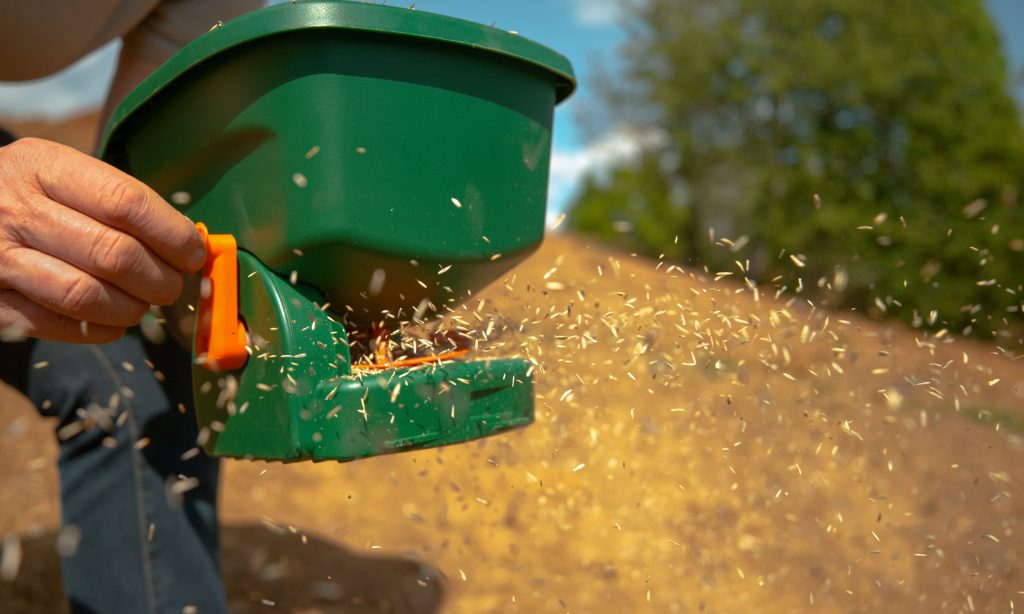
Now that you’ve got the right seeds, and your soil is ready for seeding, you can begin sowing.
Here’s how to sow grass seed successfully.
- Choose your seed spreading method. You can either use a lawn spreader device, or sow your grass seeds by hand. Remember, the goal is to spread the seed evenly, so that you don’t add too many or too few seeds in a given area. The seed bag packaging should give an indication of how many seeds you should be sowing per square metre.
- Spread the seeds onto the soil using your chosen sowing method.
- Rake the ground to cover the seed in soil, allowing it to get better access to nutrients and moisture in the ground.
- Water your garden, ensuring that the soil is nice and damp, but not completely soaked.
Congratulations, you have finished sowing your grass seeds! Now you’ll need to wait patiently for the turf to grow.
In the meantime, you need to keep watering your lawn on a daily basis to ensure that the seeds are in constant contact with wet soil. After the seeds begin to germinate, you might also like to top dress the lawn with a small layer of fertiliser, to help feed your newly sown lawn.
How to sow grass seed on an existing lawn
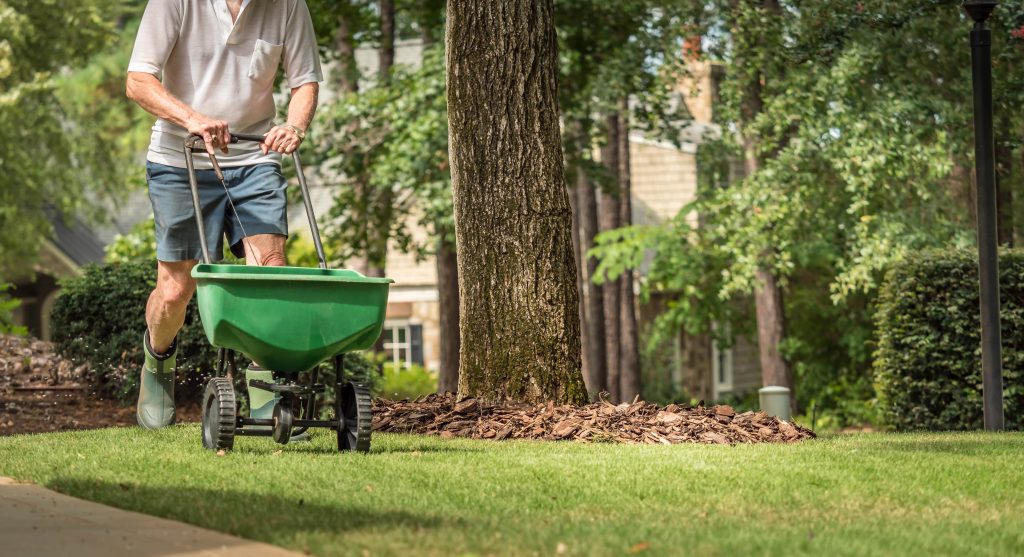
If you’re overseeding an existing lawn to fix areas of patchy turf for example, the process is slightly different.
Rather than preparing the soil by digging it up, you need to mow the lawn short, and consider scarifying it to remove as much thatch as possible. Then, you can water the garden, and begin sowing the seeds on your lawn – either over the whole surface, or just in small areas.
Read our full guide to overseeding existing lawns.
When to plant grass seed
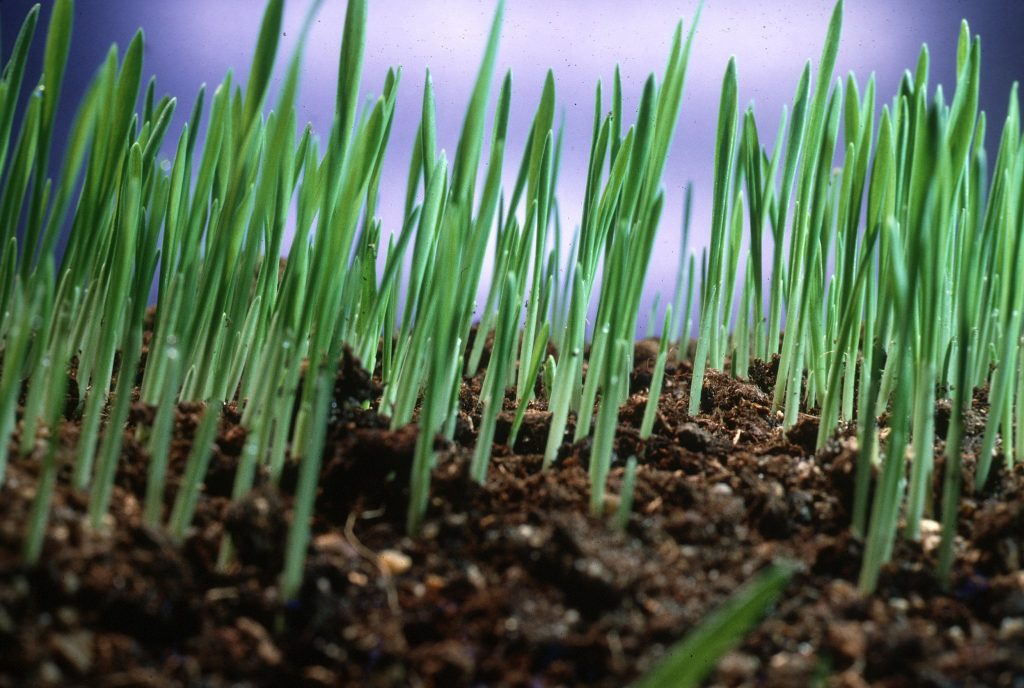
Now that you know how to sow grass seed, you might be wondering what is the best time of year to do the sowing, to ensure healthy grass growth.
Getting the timing right is actually quite important. If the temperature and moisture aren’t quite right, your grass won’t grow into a lush, consistent lawn.
When planting new lawn seed, you want to:
- Ensure that the soil is nice and moist.
- Ensure that the soil is the right temperature – not too hot, and not too cold.
- Ensure that the seeds are not in competition with weeds, which can prevent the grass from growing.
In the UK, the best time to sow new grass seed is in the late summer to early autumn.
At this time of year, the weather is still warm, but not too hot, ensuring that your new grass seeds are not scorched by the sun. And at the same time, there is generally plenty of moisture about, giving your seed the water it needs to grow. Plus, there is less competition from weeds in the early autumn.
If you can’t sow your new seeds at this time of year, your other option is to do the sowing in the spring, about at the end of March. In spring, the weather isn’t too hot, however, there may not be enough dampness in the ground below the surface. If you sow the seed in spring, you may have to water the ground regularly to ensure it gets enough moisture.
Also, if you sow grass seed in the spring, you will need to be careful to ensure that the seeds can begin growing quickly, before they are exhausted by the summer heat.
When to overseed your lawn
If you’re overseeding an existing lawn, rather than seeding an entirely new lawn, your timing should ideally be the same as if you were seeding a new lawn.
The best time to overseed existing lawns is in late summer or early autumn, in the months of August or September in the UK. At this time of year, the temperature and moisture is just right for new grass to grow successfully.
How long does it take for new grass seed to grow?
After you plant grass seed, germination should begin to occur after about ten days. Provided there is plenty of moisture in the soil, and the soil is healthy, you should begin to see shoots of grass growth coming out of the ground after a week or two.
Post-germination, it should take about six to eight weeks for most new lawns to become fully established. After three months, there should be no patchy spots, and you can begin using your garden on a regular basis.
However, if you sow your grass seed in the autumn, as is recommended, you should stay off the grass until spring. When your lawn is dormant and the weather is cold, it’s best not to disturb it if possible.
Ensure to let the grass grow nice and tall before mowing it. Ideally, new grass should be at least 6-7cm tall before you mow it, to ensure it can grow nice and thick before being cut.

I’m Josh, and I’m the head writer at Lawn Care Pro.
I love everything lawns, but I’m a bit of a lawn mower nerd. I spend a lot of my free time tinkering with mowers, and planning my mowing schedule for the next few weeks.
I’m also into cars, which comes in very helpful when servicing a mower engine!

